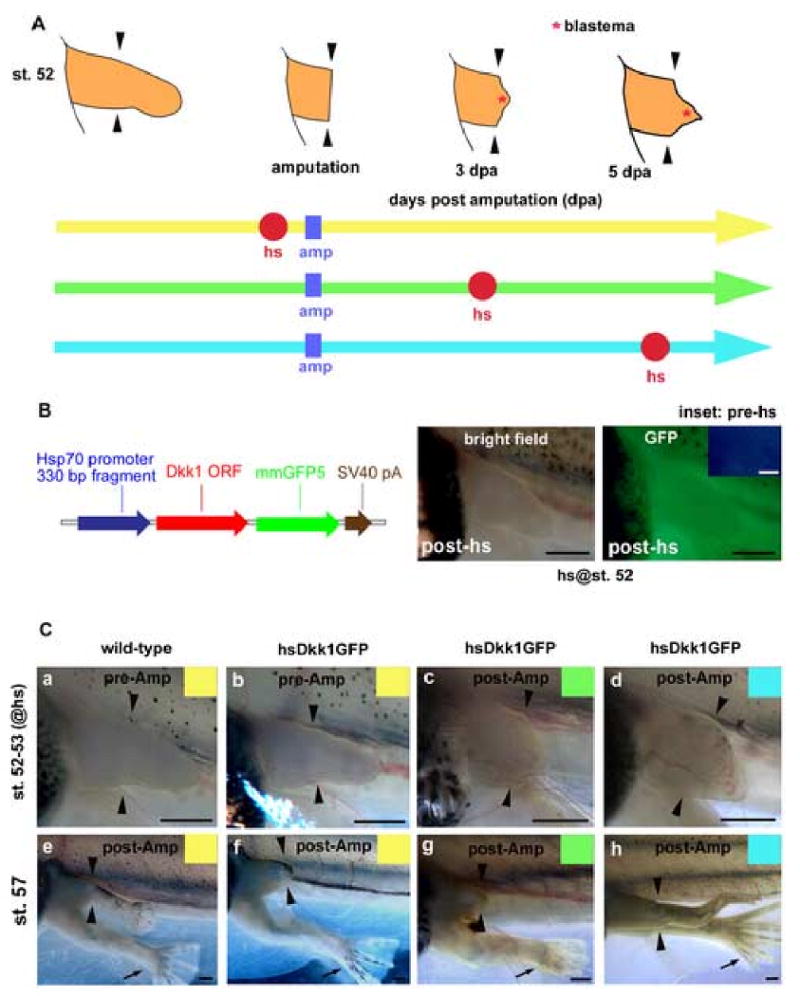Fig. 2.

Wnt/β-catenin signaling is required for Xenopus limb regeneration. (A) Experimental scheme. Hindlimb buds of F0 tadpoles were amputated at the presumptive knee level (amp: represented as blue square). One heat-shock (hs: represented as red circle) was applied to tadpoles at 3 to 4 hours prior to amputation (yellow line), 3 dpa (days post amputation; green line) or 5 dpa (blue line). (B) Map of the heat-shock inducible Dkk1GFP transgene. Details are described in Materials and Methods. Expression of Dkk1GFP was induced in a transgenic tadpole carrying this transgene within 3 to 4 hours after heat-shock (left panel, bright field; right panel, GFP). No GFP expression was detected in the same tadpole before heat-shock (inset). (C) Live limb buds were photographed when tadpoles were heat-shocked (st. 52-53; a-d). The same amputated limb buds were photographed again when regenerated limbs became obvious in controls (st. 57; e-h). A wild-type tadpole heat-shocked prior to amputation regenerated the amputated limb bud completely (a and e). While the hsDkk1GFP tadpoles heat-shocked prior to amputation (b and f) or at 3 dpa (c and g) failed to regenerate, hsDkk1GFP tadpoles heat-shocked at 5 dpa regenerated incomplete hindlimbs (d and h). Note that un-amputated right limb buds developed normally (black arrows). Arrowheads show the presumptive knee level (amputation level). Scale bars, 500 μm.
